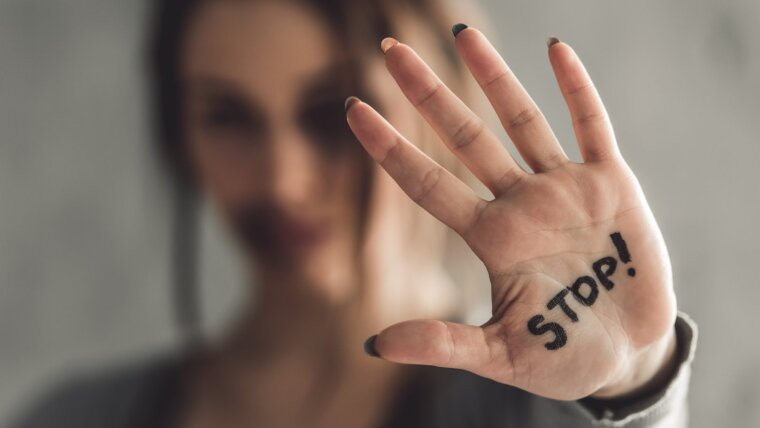
-
What is sexual harassment?
Sexualized harassment is any behavior with sexual connotations that is unwelcome and perceived as disrespectful, degrading or hurtful. Sexualized harassment can affect all genders (d/w/m) and can be perpetrated by persons of all genders. Sexualized harassment is perpetrated in a variety of forms: verbal, nonverbal, and physical. Examples of sexualized harassment include:
- Discrimination based on gender.
- Intrusive looks/staring
- Sexist/sexualized jokes
- Sexual innuendos
- Derogatory or sexist remarks about appearance, behavior, and personal life
- Catcalling (whistling/calling after, "complimenting," etc.)
- Showing pornographic images
- Unasked for nude pictures
- Sexualized signs and gestures
- Unwanted touching
- Harassing behavior
- Exposure
-
What is sexual harassment in sports?
With regard to sexualized violence, organized sports should be seen as an opportunity for potential perpetrators, because perpetrators specifically look for situations in which they can make and establish (physical) contact in an easy and uncomplicated way. The following factors favor various manifestations of sexualized violence:
- Body-centeredness of sports activities
- Necessity of physical contact
- Specific sports clothing
- "Changing" situations
- General conditions such as trips to competitions with overnight stays, etc.
- Rituals such as hugs e.g. at award ceremonies
The manifestations of sexualized violence in sports are manifold:
- Verbal/gestural assaults and sexist remarks
- Violation of boundaries when checking sportswear
- Photographing athletes to satisfy one's own sexual needs
-
What should I do if I am affected by sexualized harassment myself?
First, do not feel guilty or feel that you have misinterpreted the perpetrator's action. The following measures are recommended:
- In an acute emergency: call the police (110).
- Take advantage of counseling services: The following contact persons are available to you in cases of sexualized violence:
- Good Governance Officer External linkof the UNISPORT
- Equal Opportunity Office of the University of Jena
- Take your own perception seriously: Affected persons tend to deny their feelings for fear of rejection or because they are uncomfortable or embarrassed by what has happened. A first important step is therefore to take one's own perception seriously and to realize that a boundary has been crossed.
- Point out boundaries: Do not ignore what has happened, but (if possible) define your own boundaries in clear terms.
- Don't hide anything: Discuss the incident with people you trust and contact the counseling and help centers inside and outside the university.
- Documentation: Document assaults in writing, stating what happened, the date and time, and keep relevant emails or screenshots. They may be important for further action.
-
What should I do if I am affected by sexualized harassment myself?
Do not look away: Take the affected person's perception seriously. Do not do anything without the affected person's consent.
Acute case:
- Address sexual harassment.
- Do not tolerate such behavior.
- Take the affected person seriously and refer him or her to offers of help and to appropriate persons of trust.
- Offer the person help or a confidential conversation.
- Document the case and act in close consultation with the person concerned.
- Seek advice from our good governance officers.
Preventive:- Promote respectful and open interaction with each other.
- Inform yourself about possible specialized contact persons.
- Reject the relativization of sexualized violence and harassment.
- Draw attention to the issue in your sports courses and make it clear that sexualized violence or harassment will not be tolerated.
-
What are my responsibilities and limits as an exercise instructor ?
In your function as an exercise instructor, you have a special responsibility for your participants. For this reason, appropriate behavior with clearly defined boundaries is important for your work in university sports:
- Make sure that no form of violence ( physical, psychological or sexual) takes place in your sports courses and actively position yourself against it.
- If your sport involves various forms of physical contact (e.g. during assistance), enforce sport-specific rules of fair play and ensure respectful treatment of each other.
- Be aware that everyone feels closeness and distance differently. Adapt your behavior accordingly and respect the personal boundaries of all participants;
- Be aware of your role as a role model and sensitize the participants to the topic of "sexualized violence" by dealing with it in an appreciative and open manner
- Information and consulting services